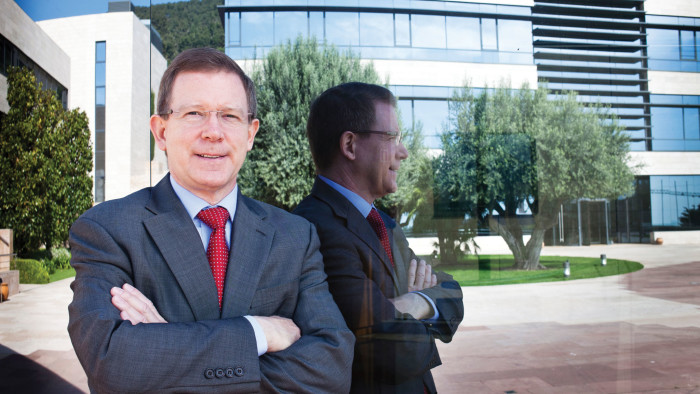The future of lifelong learning

Roula Khalaf, Editor of the FT, selects her favourite stories in this weekly newsletter.
Future shock, according to Alvin Toffler in his seminal book of that name, is what happens to people when they experience too much change within too short a period of time.
Since the book’s publication in 1970, change seems to have accelerated, posing a challenge for executives who wish to keep up and for the business schools that aim to educate them. But despite the need to learn more and adapt faster, many schools report that there is less time to devote to education and less money to pay for it.
“There is an endless need for maintaining one’s employability,” says Eric Weber, associate dean of Iese Business School in Spain, which focuses heavily on continuing education for alumni. “You have plenty of people in their late 30s, early 40s or even 50s who suddenly see the need for more education.”
Like his peers at other business schools with established executive education programmes, Prof Weber has noticed that in these cash-constrained times, companies are much less willing to foot the bill, especially for longer programmes.
“When you analyse who pays the fees, it used to be the companies. That has switched dramatically,” he says, adding that 80 per cent of students used to be funded by companies, but the figure was now 40-50 per cent.
Peter Cappelli, director of the Wharton Center for Human Resources, has also seen a sea change in the source of funding for continuing education. “One development we have seen in executive education is individuals coming to our longest and most expensive development programme and paying their own way to do so. This never happened before. Attendees were always sponsored and paid for by their employer,” he says.
US companies, he says, are less willing to pay for learning for anyone, especially for older executives. “We don’t see many older executives in large corporations – they are bought out to leave long before that.”
Companies are not only cash poor but also less able to release executives to pursue educational goals.
Prof Weber says Iese has had to look at the length of courses on offer. “More important than cost is time away from the office,” he says, adding that middle management executives, due to cutbacks, are often doing the jobs of two or three people.
Dominique Turpin, president of IMD, also believes the trend for executive education is for courses to get shorter or for elements of courses to be provided online. “We used to have a marketing programme that was three weeks long. We were able to fill it twice a year with 50 people. Today, the same programme is one week long,” he says.
IMD generates about 60 per cent of its revenues from short one-week courses; 10 years ago that figure was 40 per cent, says Prof Turpin.
Despite huge demand for short courses at IMD, Prof Turpin does not expect the age range of attendees to change significantly from its current average of just over 40. He says this is because attendance tends to be sponsored by companies that are less likely to invest in older executives simply because they are more expensive.
However, if Gianpiero Petriglieri, associate professor of organisational behaviour at Insead and director of its management acceleration programme, is to be believed, the age of participants in lifelong learning programmes will soon be on the rise.
“We used to associate seniority with knowledge and youth with uncertainty,” he says, adding that he had noticed a change in recent years with a broader range of people, both older and younger, “giving themselves permission to learn”.
“We often assumed everyone comes to business school because they want to be promoted or to keep their job. That couldn’t be further from the truth,” Prof Petriglieri says, adding that, in his opinion, managers come not only to learn something new but also to explore new possibilities.
Like IMD, Insead puts great emphasis on tailored courses for companies where it might educate 20-30 people at once in what Prof Petriglieri refers to as “diagonal slices” that cut across age and company rank. “These companies are using executive courses more as a way to combine the development of individuals with the development of the organisation,” he says.
This close association with companies, or the fact that Insead operates not only in France but also in the higher-growth cities of Singapore and Abu Dhabi, might explain why Prof Petriglieri would not agree with peers who have seen a decrease in interest in executive education from companies.
“There is a growing realisation that there is nothing more dangerous than a leader who thinks they know everything,” he says, adding that since the financial crisis companies have realised models and frameworks are not enough. “Companies no longer want the fiction that leaders can provide all the answers from the top.”
Clare Kelliher, professor of work and organisation at Cranfield School of Management in the UK, also expects to see more older executives in lifelong learning programmes.
She says Cranfield’s programmes are tailored to people’s career stage, rather than age – a strategy that would fit with changing demographics. She believes other countries might follow the UK in removing the default retirement age.
Whatever age or stage people are at, it is important that they keep up, she believes, pointing to the influences of new technology and globalisation.
Prof Cappelli would agree. “Businesses are doing things differently, entering new markets, changing strategies, making use of new approaches. That requires new competencies,” he says.
Comments